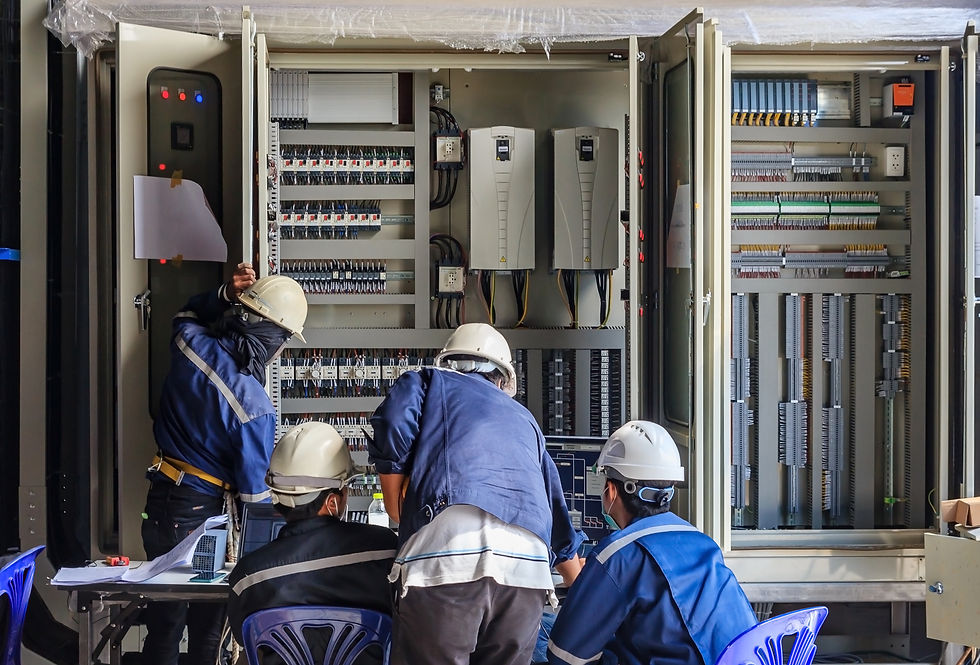Retrofitting: Upgrading Your Electrical Systems
- Commercial Electricians

- Oct 23, 2023
- 2 min read
Updated: Feb 1, 2024

In the ever-evolving landscape of commercial properties, the need to adapt and innovate is constant. Retrofitting, the process of upgrading existing electrical systems, has become a strategic move for businesses aiming to enhance safety, efficiency, and sustainability. Here's a closer look at the concept of retrofitting and its potential benefits:
1. Efficiency Enhancement
Retrofitting allows businesses to leverage advanced technologies and materials that enhance energy efficiency. Upgrading lighting fixtures, HVAC controls, and electrical equipment can result in substantial energy savings.
2. Cost Savings
Improved energy efficiency not only reduces utility bills but also lowers maintenance and replacement costs. Upgraded systems tend to be more reliable and require less frequent repairs.
3. Environmental Responsibility
Retrofitting aligns with sustainability goals by reducing energy consumption and greenhouse gas emissions. By adopting energy-efficient technologies, businesses can contribute to a greener future.
4. Compliance with Regulations
As electrical codes and regulations evolve, retrofitting ensures that your building remains in compliance. Staying up-to-date with safety standards is essential to avoid legal issues and fines.
5. Enhanced Safety
Retrofitting may involve replacing outdated or hazardous components, contributing to a safer work environment. Reducing the risk of electrical fires and accidents protects both people and property.
6. Modernization
Retrofitting brings your electrical systems into the modern era, making them more compatible with contemporary technology and automation solutions. This can improve overall operational efficiency.
7. Increased Property Value
Upgraded electrical systems can enhance the value of your commercial property. Prospective buyers and tenants are often willing to pay a premium for energy-efficient, well-maintained buildings.
8. Customization
Retrofitting allows you to customize your electrical systems to meet specific needs. Whether it's accommodating new equipment or changing the layout, retrofitting provides flexibility.
9. Return on Investment (ROI)
While retrofitting may involve upfront costs, the long-term ROI is typically significant. Energy savings and improved functionality often outweigh the initial investment.
10. Future-Proofing
Embracing retrofitting as a regular practice helps future-proof your property. As technology continues to advance, staying ahead of the curve ensures your building remains competitive and relevant.
In the dynamic world of commercial real estate, retrofitting offers a pathway to improved efficiency, sustainability, and safety. By proactively upgrading electrical systems, businesses can position themselves for success in an ever-changing landscape. It's an investment in both the present and the future, with benefits that extend far beyond the bottom line.



Comments